Veiling or concealing the body and face has been a general practice in the Gulf region for ages. As the natives of this region are all followers of Islam, the act of concealing has generally been associated with religion. In this post, we will look at whether and how religion affected women’s dress in the region. This is not a discussion on the doctrines of Islam, but rather a brief look at the sources within Islam that encouraged veiling practices and how it has developed over time. We will then look at the different styles of face covering practised in the UAE and how it has changed.
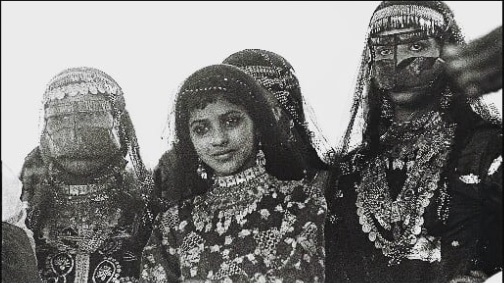
Styles of cover
The general term ‘veil’ has different meanings in various parts of the region and are used to refer to different types of garments. Local Arab and Muslim cultures have a different understanding of the practice of veiling than those in other cultures. We will look at three basic styles of covering or veils worn within the UAE culture over the next few posts: facemask, head cover, and full body cover.
The role of religion
Although veiling is a custom that is generally associated with Islam, it has pre-Islamic roots and can be traced back to Assyrian times when it was used as a means to distinguish between the social classes. In 1500 BC Assyrian women were prohibited to appear in public unveiled while slave women were prohibited to cover their faces. The custom of veiling for status and honour spread throughout the Arabian Peninsula via trading and interaction with Persia and Byzantium during pre-Islamic times.
In her Sultani Book, Dr Reem El Mutwalli explains the role of veiling in Islam and gives an overview of how and where it is referenced in the Qur’an, the hadith and the ijma. For the sake of accuracy, her full text on this subject is published here:
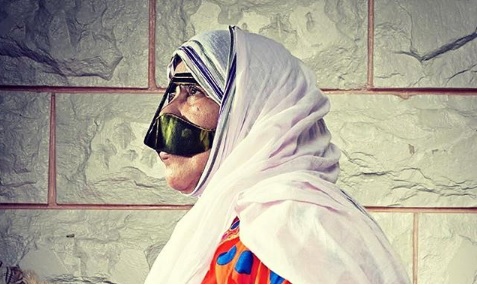
Veiling in Islam
Islamic thought regarding dress is founded on the legislation in the holy Qur’an, the hadith, which are traditions of the Prophet (S.) and their authorised scholarly interpretations, and ijma, which is the consensus of eminent scholars at various periods. A study of the Qur’an reveals eight ayat (verses) that mention particular articles of dress (e.g. al-sarabil and al-qamis), but not in the context of a specific doctrine. Some verses address these items as part of dress in general, while a number of other verses address women’s dress in particular and form the basis of the Qur’anic influence on the issue. A single verse dictates the ordinance of dress concerning elderly women; two verses lay down the basic regulations of dress concerning women in general; four verses instruct the Prophet (S.) regarding his own wives; and four verses emphasise that both men and women should lower their gaze and guard their modesty.
In the Qur’an there is no specific injunction indicating that women should be veiled or secluded from participation in public life. Although in the hadith a stricter measure of veiling is suggested. The impact of hadith is more ambiguous because it depends on views and diverse interpretations derived from many religious scholars of Islam. It is argued that this ambiguity may be one of the blessings bestowed upon the people of Islam. Through it, Muslims gain a certain elasticity of application, which keeps the path open for further deliberation and new thought.
To give the topic the study it warrants one must compare and consult the collection of traditions by Anas ibn Malik and the interpretations of the collections of traditions by the six most prominent scholars in this field: Muhammad ibn Isma’il al-Bukhari, Muslim ibn al-Hajjaj al-Qushayri, Muhammad Isa Al-Tirmidhi, Abu-Da’ud, Ahmed ibn Shu’ayib Al-Nasa’i, and Muhammad ibn-Yazid Ibn-Majah.
Most of them agree that Islam allows a woman to have her face, palms of her hands, and her feet visible cautioning that both her appearance and behaviour must stay demure and respectable. This point is further emphasised as women continue to be instructed to refrain from wearing the veil that covers their faces when performing the five daily prayers and as they worship during Hajj.
Veiling in the UAE
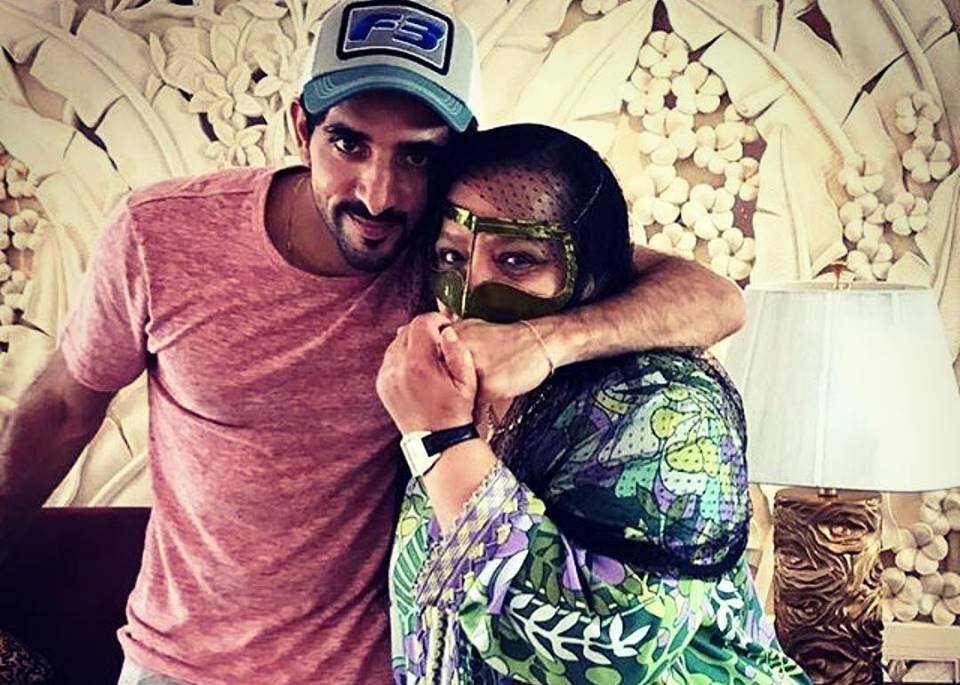
The Past
The coastal societies of the Arabian Peninsula were exposed to influences from the Persian side of the Gulf as well as the countries further East, like Pakistan, Baluchistan and India. Veiling in various forms were part of these cultures and had an influence on local society. The Gulf region remained almost untouched by external influences until the twentieth century, creating isolated tribal communities where the way of life was shaped by tribal customs and traditions. Honour played an important role in the status of the tribes with the chastity of their women as the embodiment of this honour.
In contrast, the severe climate conditions and scarcity of resources lead to women dressing in lightweight clothing during daily activities within these isolated communities. Photos from the 1950s depict women with dresses so transparent that their silhouettes are clearly visible through the sheer fabric even though their faces and heads are covered. Some garments had extended side slits or loose-fitting sleeves, exposing the woman’s skin and revealing the upper body. This is in contradiction to the current practice of complete concealment followed by most UAE women.
Read more about the style and history of UAE thawb and kandurah here.
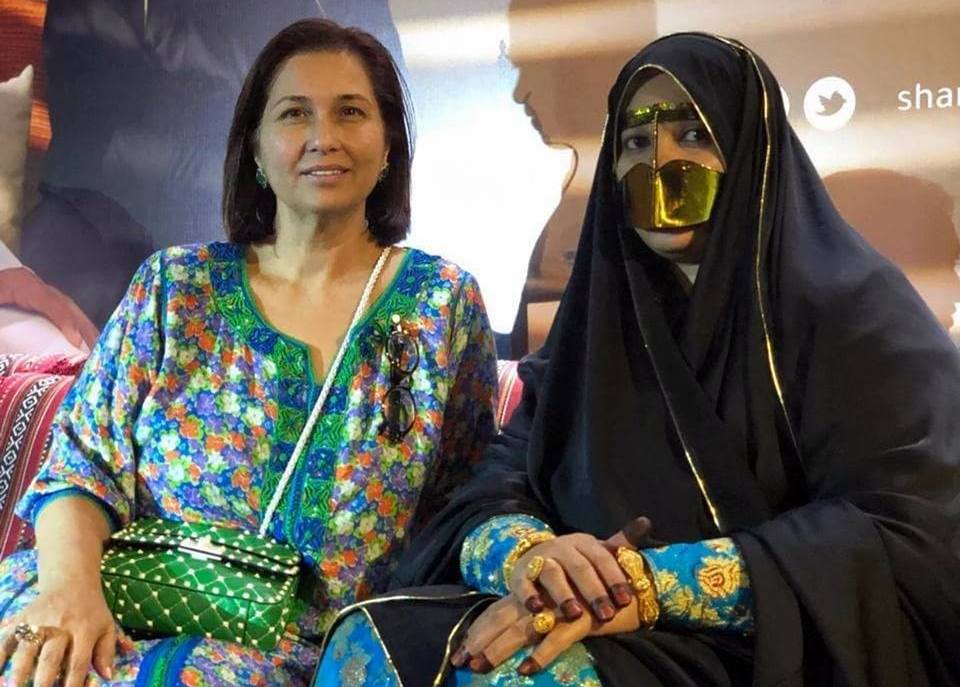
Modern times
The development of the oil industry brought rapid changes to the cultural and social dynamics in the UAE. Ironically, the influx of foreign workers and their families into the region encouraged the continued use of the veil. First, to protect the women from the eyes of foreigners and later as a symbol of their national identity. International media and an awareness of international styles and fashion did influence the appearance of face covers – some styles became less popular while others became more fashionable.
The rapid increase in wealth created a privileged and wealthy society with the upper class, especially the ruling family, adhering to the veil to distinguish themselves from the lower social levels. The rest of society caught on, adopting the veil as a status symbol, wearing it over their newly acquired western outfits.
There is no written law in the UAE regarding the wearing of a veil, be it a face mask or a full body cover, in public – it is a personal choice and a strong social statement by the UAE upper classes. But as more women became involved in the workforce and started interacting with the general public, the found the veil to be restricting and a hindrance in their everyday duties. Increased exposure to neighbouring Islamic Arab and other Muslim societies also introduced different religious traditions and new interpretations of Islamic thought and doctrine. This sparked a conflict between the traditional social acceptance of veiled women and the veiling requirements derived from the Qur’an and the hadith. This confluence of religious requirements and social behaviour meant that women viewed as chaste and modest had become a symbol of status and high class.
It was and still is pertinent that women appear modest and not draw male attention to themselves, leading to concealment and segregation of the sexes. Religious guidelines ordained that both men and women share this responsibility in chaste and moral behaviour, but various political and religious interpretations resulted in women bearing the greater responsibility, and culpability, for improper behaviour.
Although the covering of women might seem restrictive and prohibitive, with the face cover, the niqab, demonstrating extreme religious fundamentalism in the eyes of the West, it has ironically enabled women to move free and anonymous in public. The niqab was revived in Cairo in the early 1970s as a symbol of Islamic fundamentalism but in the UAE, it has recently become popular for more practical reasons such as moving around incognito in public.

The future
Today, fashion and dress are still an integral part of society – as a symbol of status and as a growing business and commercial sector. Institutions like the Islamic Fashion & Design Council under leadership and vision of Alia Khan, with movements like the Modest Fashion Revolution, managed to elevate traditional styles of clothes into the 21st century. Although few modern women still cover their faces, head and body covers have become part of the modern woman’s wardrobe in the UAE and the wider Arab community.
The Zay Initiative is honoured to have Alia Khan as a member of our Circle of Advisors.

In the next posts, we will look at the different styles of face covers in more detail.
We would love to hear from you if you have a story about growing up in the UAE, wearing head or face covers, or if you have photos of your family wearing traditional attire that you would like to share with us.
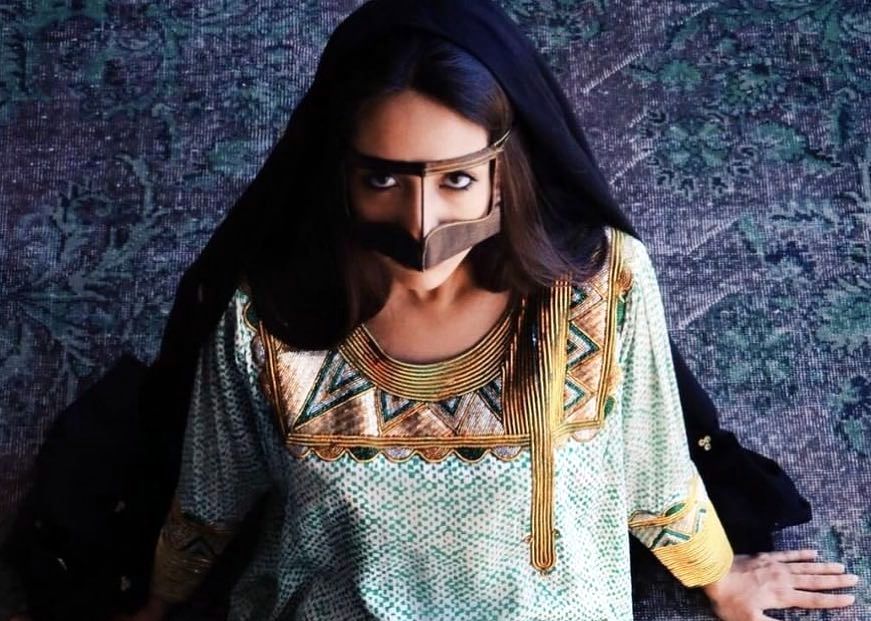

Latest Comments
POST YOUR OPINIONTi Seymour
August 8, 2019Congrats and thanks for this information. I enjoyed learning more about the history of these cultured women.
I took a series of workshops with the ladies from Al Ghadeer UAE Crafts. By the end of the week I felt confident enough to ask questions about their face covering. One older lady took off her leather mask and placed it on me and we took selfies. It was a sweet moment. I asked the younger ladies why they didn’t wear the same kind of facial mask and they said it wasn’t what was in fashion for their age. But they also said when they get to an age of that of the instructor, who had just taught how to do Telli – an incredibly complicated braiding process to which we laughed and laughed at my hopelessness, that perhaps out of respect for their elders they may wear the same.
It was a wonderful experience meeting these ladies and I was invited back to the office to meet again. Which I did, several times. Such good memories and a wonderful way to share crafts. I treasure the photos taken with these talented ladies and their wonderful sense of humour despite the language barrier.
Warm regards
Ti Seymour
digitalarchadmin1
August 12, 2019This is wonderful, can you reach out to these ladies and encourage them to donate some old articles to our collection? We record the story of the woman with her Dress to preserve for history, check out our digital archive we are just brining to publish them one by one:https://thezay.org//product-category/country/uae/
Esmeralda
April 6, 2020I’m loving everything about this website. Thanks for all this knowledge that help us not only to understand the culture but also to appreciate it even more! History is everything!
Ansie
April 7, 2020Thank you, Esmeralda!
It is great to know that we make a difference.
Please tell your friends about us, and ask them to sign up to our mailing list. That way we can all make a difference together.
Ansie